Dear Artist,
Mohinder Puri of Delhi, India, wrote, “It’s easy to say that focus is possible through effort, but it has a great deal to do with innate mental capacity — what we call practicing “Dhyana” in Sanskrit. A certain level of focus always eludes you. It is the relative energy that conditions one’s level of focus. One should practice Dhyana to overcome this.”
Being curious as to how the wisdom of the East might be of value in studios of the West, I’ve always been interested in meditational spin. The idea of Dhyana takes the form of “Chan” in China, “Zen” in Japan, “Seon” in Korea and “Samten” in Tibet. Dhyana is known as an instrument to gain self-knowledge, creativity and the ability to concentrate. The idea is to free the mind from the “five hindrances” (craving, aversion, sloth, agitation, doubt) and the distraction of discursive thinking. Interested?
In the individual practice of what I call “Natural Dhyana” we see variations of creative intelligence. Think of the relative abilities of different folks to simply absorb the knowledge of others. More importantly, think of our varying abilities to follow the advice of our inner gurus. Yep, all those nasty hindrances tend to get in the way. Without resorting to levitation around the studio, here are a few practical ideas:
In the morning and several times throughout your working day, systematically take time to “center” yourself. Relax, reassess, contemplate work in progress, and look ahead. Teach yourself to do this centering while simultaneously doing other tasks — priming, squeezing out, cleaning up. In the close practice of your art, learn “multi-leveling,” the ability to think of one thing while you’re thinking of another. While your mind is ostensibly at rest, look for creative opportunities for expediency and efficiency. Let “Lazy mind,” “Management mind” and “Doing mind” share life in the studio. While energy may seem boundless, it is not. It needs respect and husbanding. Very often, simple Zen-like activities can make a difference. For example, slow down your line to half its normal speed. Take time to relish brushstroke, texture or passage. Make works of art that look fast and fresh, but take longer to accomplish. Go steadily and move calmly along your chosen path.
Best regards,
Robert
PS: “There is no art without contemplation.” (Robert Henri)
Esoterica: A problem for some artists is the scourge of self-sabotage. This can often be traced to simple guilt — generally to do with some of the five hindrances mentioned above. Guilt promotes poor self-esteem and can ruin careers. Eliminating the source of guilt and genuinely purifying the soul is the saint’s choice — not always possible in the real world. Private meditation and Natural Dhyana, a bit like the remarkable Western convention of Confession, tends to temporarily absolve guilt, clarify direction, focus the mind and put the world more aright. Dhyana has been reported to snuff out self-defeatist gremlins.
This letter was originally published as “Dyhana” on September 4, 2007.
Have you considered a Premium Artist Listing? With each letter, an artist is featured at the bottom of this page. The Premium Artist Listings are a means of connecting artist subscribers through their work. Proceeds from each listing contribute to the production of The Painter’s Keys.
Artists don’t make objects. Artists make mythologies. (Anish Kapoor)
Featured Workshop
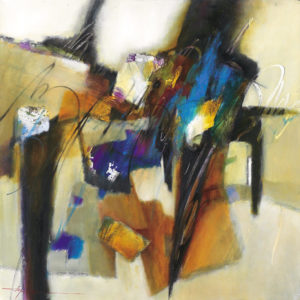 Powerful Design, Sensual Edges put Together with Exciting Color
Powerful Design, Sensual Edges put Together with Exciting Color
Design is the foundation of any painting and you want your paintings to have powerful designs filled with exciting color. In this course we will discover designs two hidden meanings around where you put your center of interest plus how to use neutrals to make your paintings glow and finally add sensual edges that are the soul of the painting.
This workshop will be a live virtual event. I will be there with you during the entire four days. I can’t wait as I am excited. Please email me if you have any questions….gwen@gwenfox.com
August 31 – September 3, 2020, Location…Online
Register here: https://gwenfox.com/retreat/powerful-design-sensual-edges-put-together-with-exciting-color/
Featured Artist
We live in a fractured world. Wars, famine and power games are forcing people to abandon their homes and their way of life in hopes of finding peace. For lack of education or specialized skills, the poor are not accepted into our northern communities. They stay in the camps on the borders of turmoil, separated from local community. Animals are caught in the crossfire. Even the trees and the rocks suffer the agony of imbalance. This chaos is evident in my work. In between the rivulets of paint and the textural accidents I choose colours and forms to suggest a landscape where beauty continues to reign. We can still change the tide and build a new world harmony. Certainly, contemporary will focuses on gold instead of beauty. Yet, beauty is essential to the wellbeing of the planet. She is essential to the survival of humanity.

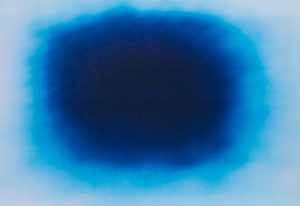
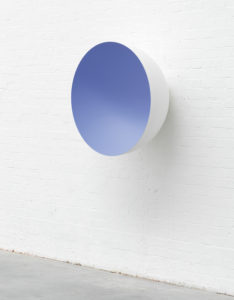

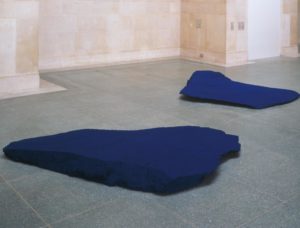
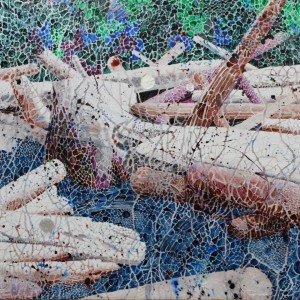



6 Comments
What MR Puri does and does not aim at the artist or explicitly the art work. Focus is nothing more than asking where does the eye focus on when observing the painting. Traditionally the artist was taught that this was an important aspect to consider when one looks at ones art..how one’s eye travels around the painting, where it starts (focus) and where it goes. Today this is a forgotten element in the artist’s tool box!
‘Focus’ is more about the artist’s ability to concentrate on doing what needs to be done, and not being distracted by the million other things in life. I do not believe it’s about just the painting itself.
Some of us were lucky enough to have experienced Robert Genn’s “multi-leveling” techniques in person, at an
annual convention at Painter’s Lodge in Campbell River which featuring many of the finest contemporary artists.
He was able to demonstrate his remarkable artistic skills using one level of intelligence, while simultaneously
quoting various named artists and sages on another.
Boy Howdy! If all I need to do to achieve “Dhyana” is throw some blue faux fur down on the floor and contemplate it….well, who needs ART!
It might be inappropriate to say, but Indians, according to my ten years of experience working with them, are the most distracted students I have ever handled. I tried all sorts of things to improve it but I think that ‘Dhyana’ is not being practiced there or it is already a thing of the past. The only coping mechanism that I could practice was to consider it as a cultural thing.
During this extraordinary time of the pandemic, I have had the opportunity to delve into some wonderful online yoga classes – thank you Andrea, http://www.bodyandbalance.ca/ I relish these times to focus on my health and wellbeing, to take time to be calm and focused. Having a loud inner critic that keeps the “five hindrances” (craving, aversion, sloth, agitation, doubt) well in mind, I have tried to use what I am developing through yoga, to help me throughout the day, in my art and in my life. It is a good reminder that much of this is a “practice” rather than a “perfect”. I enjoyed reading this letter. I have been intrigued with the diverse work of Anish Kapoor and have been fortunate to see some of it in the real, at the Denver Art Museum and at the Massachusetts Museum of Contemporary Art. In particular, his large mirrored pieces, like the Chicago “Bean”, I find intriguing for how they ask us to reconsider who we are because of the distorted reflection. Thank you for reposting this letter with the images.